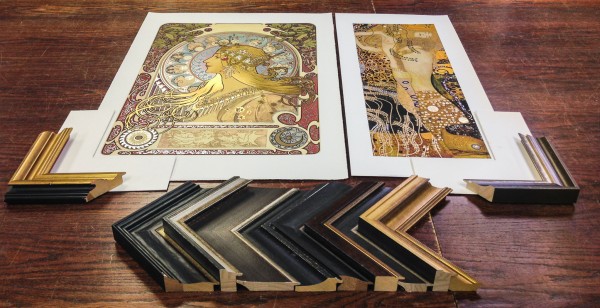We’re custom framing experts. No ready-made frames at FrameMakers!
The following are the most commonly asked questions. If you have a question, comment, or an idea to enhance this page, please email us now.
Q1. How is a frame chosen? 
A1. The frame must firstly enhance the artwork, by choosing the right colour, shape, and style of moulding. Then we match it to the environment and the taste of the client.
Q2. When is a mat appropriate?
A2. Mats are used in framing artwork, documents, photos etc. Mats were invented to keep the artwork from being in contact with the glass and gradually improved in quality. (Glass condensates and the moisture would seep directly into the artwork/paper, causing irreparable damage).
Q3. How should a painting be cleaned?
A3. An oil or acrylic painting on canvas should be cleaned by a professional every ten years or so to remove any dirt, grease, smoke that accumulates over the years. The “restorer” can then also check the painting for other damages such as cracking and “blooming”.
The varnish may have to be removed and a new coat applied, to freshen the painting up. Canvases should be kept dust free with either a very soft brush or soft cloth to ensure you do not damage the texture.
Q4. How to clean glass in frame picture?
A4. To clean glass on a framed piece, always spray the Windex® on a lint free cloth or paper towel. Never spray directly on the glass as it will run into the frame and dampen and damage the mat.
Q5. How do you package framed and glassed artwork for shipping?
A5. The best packaging option is a wooden crate. We ensure that the art will not be in direct contact within the crate. For smaller pieces of art there may be other options.
Q6. What is museum framing?
A6. “Museum” or conservation framing means making sure than any materials used in the process are acid-free (PH neutral). Only (cotton) rag board should be used for matting and backing. The artwork should never be permanently mounted but rather hinged to a 2 or 4 ply rag board, and then backed by acid-free foam board.
Only acid free hinges (Japanese paper and rice starch or mylar pockets) can be used; no masking tape should be used anywhere in the process. Glass should be either UV filtered or Anti-Reflection plus UV filter.
The artwork should be kept dust free regularly and cleaned inside every 10 years or so to remove dust build up under the glass and to check for any insects.
Q7. What is acid-free paper?
A7. Acid-free paper is paper that when infused in water yields a neutral or basic pH (7 or slightly greater). This is ideal paper for archival or conservation framing.
Visit our showroom. Choose from over 4,000 frame samples.
Unlimited custom designs and framing solutions.
Explore your options. Book your FREE consultation.
Call 416-665-8215 ~ creative@FrameMakers.com
Over 4,000 frame samples. Unlimited custom designs and framing solutions.
“Museum” or conservation framing ensures that all materials used in the process are acid-free (PH neutral).